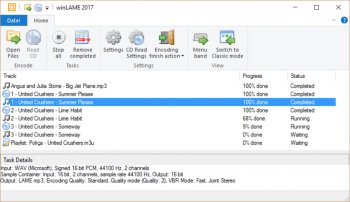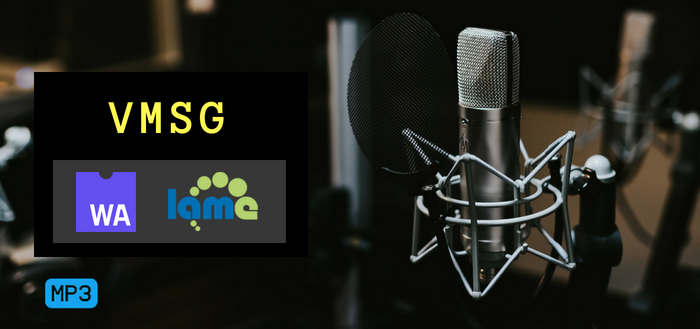

Archived from the original on 8 February 2012. The page's later caution about third-party implementation–specific patents is not about LAME's implementation. The licensing program coming to an end is due to the fact that the last patent included in the program expired. ^ "Alive and Kicking: MP3 software, patents and licenses (Fraunhofer Audio Blog)".^ Lendino, Jamie (27 September 2019), "Audacity Review", PC Magazine.^ "LAME MP3 Encoder :: Related Links".LAME) to improve far beyond the original 元enc and dist10 reference implementations. This is what made it possible for modern MP3 encoders (e.g. Archived from the original on 15 October 2017. In the course of the 2005 Sony BMG copy protection rootkit scandal, there were reports that the Extended Copy Protection rootkit included on some Sony Compact Discs had portions of the LAME library without complying with the terms of the LGPL.
#MP3 ENCODER LIBRARY SOFTWARE#
Some software was released using this strategy: companies used the LAME library, but obtained patent licenses. They also advised users to obtain relevant patent licenses before including a compiled version of the encoder in a product.
#MP3 ENCODER LIBRARY CODE#
The LAME developers stated that, since their code was only released in source code form, it should only be considered as an educational description of an MP3 encoder, and thus did not infringe any patent in itself. Distributing compiled binaries of LAME, its libraries, or programs that derive from LAME in countries where those patents have been granted may have constituted infringement, but since 23 April 2017, all of these patents have expired. The developers of LAME did not license the technology described by these patents.

Like all MP3 encoders, LAME implemented techniques covered by patents owned by the Fraunhofer Society and others.
#MP3 ENCODER LIBRARY PATCH#
LAME is not a patch anymore, but a full encoder.


 0 kommentar(er)
0 kommentar(er)
